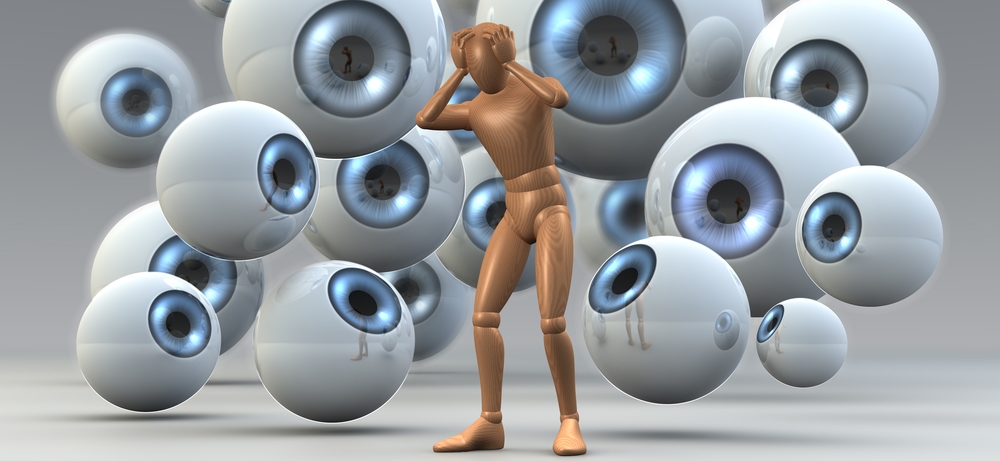
Where’s the K? Why is it so much harder to do some things when we’re being watched? I’m not a touch typer, but I’m reasonably fast and fluent on a keyboard…unless there’s someone at my shoulder. If I’m being observed, suddenly consonants start hiding!
The mere presence of people has been known to affect performance for many years. Norman Triplett, back in 1898, noticed that cyclists consistently achieved faster race times when cycling with others. He concluded that the “bodily presence of another contestant” alone was enough to improve performance. Further research found that performance often improves when that ‘bodily presence’ isn’t even competing. For example, simply having observers on tasks ranging from sports to mathematics and word puzzles, also raises performance. This phenomenon became known as social facilitation.
So what about the disappearing letters on my keyboard? It turns out that having people around you cuts both ways. If the task is well learned or simple, performance improves when observed. If, on the other hand, the task is complex or not-well learned, performance drops. For example, when novice pool players are observed, they miss more shots than normal; the opposite effect is noticed in experts. So when my sons attempt to demonstrate their new skills on a skateboard to grandparents, they end up saying ‘No, wait…I’ll get it right this time’ (a lot).
The effects of social facilitation are robust and everywhere. Bizarrely, it even affects cockroaches! Cockroaches complete straight runways faster when they are with other cockroaches than alone. However, they are much slower on complex mazes when there are others around.
Why does this happen? It’s to do with arousal (at least for humans…I can’t speak for cockroaches). For simple or well-learned skills, the attention of others increases our arousal which leads to greater focus on what we’re doing. This improves performance. However, an increase in arousal when performing complex or new skills can divert cognitive resources from the task at hand, reducing effectiveness. For example, when students were being monitored electronically, they learned less well on a web-based training program.
In addition, ‘arousal’ may mean something different for established versus new skills. In the former case, arousal may mean stimulation. In the latter it may mean fear of evaluation. In fact, it has been shown that when people are observed doing complex tasks their cardiovascular system responds as it does for threatening situations. This is further supported by some interesting research in the world of sports. For many years, crowds have believed ‘home field advantage’ comes from the strength of their support for their team. It now appears that any amount of cheering for your team has no effect on the game. However, jeering and booing the opposing team leads them to fluff more shots and commit more fouls.
Social facilitation can increase ‘performance’ in unhelpful ways too. Men eat 36% more when in the company of others; women eat 40% more! So, if you’re on a diet, eat alone…unless of course you were to increase the complexity of the task and eat with chopsticks…
All of this reinforces what we should all be doing in our increasingly flexible and mobile workplaces: being deliberate and intentional about where we choose to work. The reality is, our context makes much more impact on our task performance on than we’d ever consciously accept. So choose the right place for the right task. If you want to crack through a mountain of simple stuff, work somewhere where your work is visible (and surrounded by other people who are also working furiously). If you want to do something more cerebral, more complex; get away from observers!
Strauss, B. (2001). Social facilitation in motor tasks: a review of research and theory. Psychology of Sport and Exercise, 3, 237-256.


